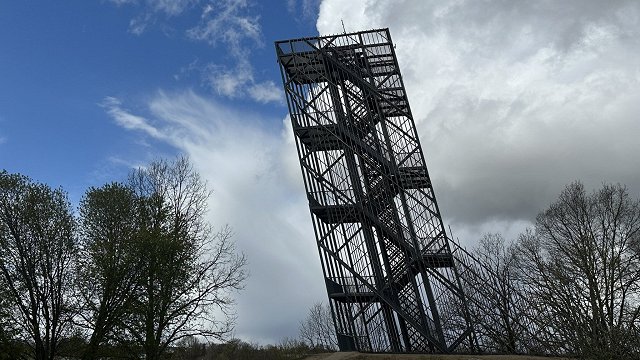In a courtyard of residential buildings in Rīga, a few ditches have been dug and artificially filled with water. It's done to measure how quickly the soil will be able to absorb it. According to city planners, in Latvia, the name for this would be a rain garden and it is a relatively new way to solve the problem of drainage of rainwater, even if it seems obvious.
The housing complex on Turaidas Street in Rīga has no connection to the city's sewer system, so the rainwater has nowhere to go. Some 120 cubic meters of water accumulates in the yard during heavy rains.
"We have big problems with the city's rain sewer in the central building area. It would be very desirable there that the city's networks would not be burdened with rainwater coming from vast areas," said Krišs Maļinovskis, spokesman of housing developer Bonava Latvija Ltd.
A rain garden has been created for water to purify after infiltration into the ground.
"The simpler explanation of rain garden is actually what we might call a ditch. Visually, it is a ditch, with plants, and the invisible part is several layers of soil, where there is a mixture of sand with fertile soil for plants to live on,” explained Maļinovskis.
The rate of water absorption is measured for the second time, and there are conclusions from the first round of measurements.
"In fact, the ditch is emptying overnight, which is very good. And that was the slowest speed. And the fastest time was even five or seven times faster,” said Jurijs Kondratenko, spokesman of the Water Research and Environmental Biotechnology Laboratory at Riga Technical University.
Overall, there are around 50 thousand such rainwater disposal sites in Europe. The method is natural, and it also matters when it comes to climate.
The cost of building such a system varies from place to place, but on average it is 30% cheaper than creating a standard system.




























